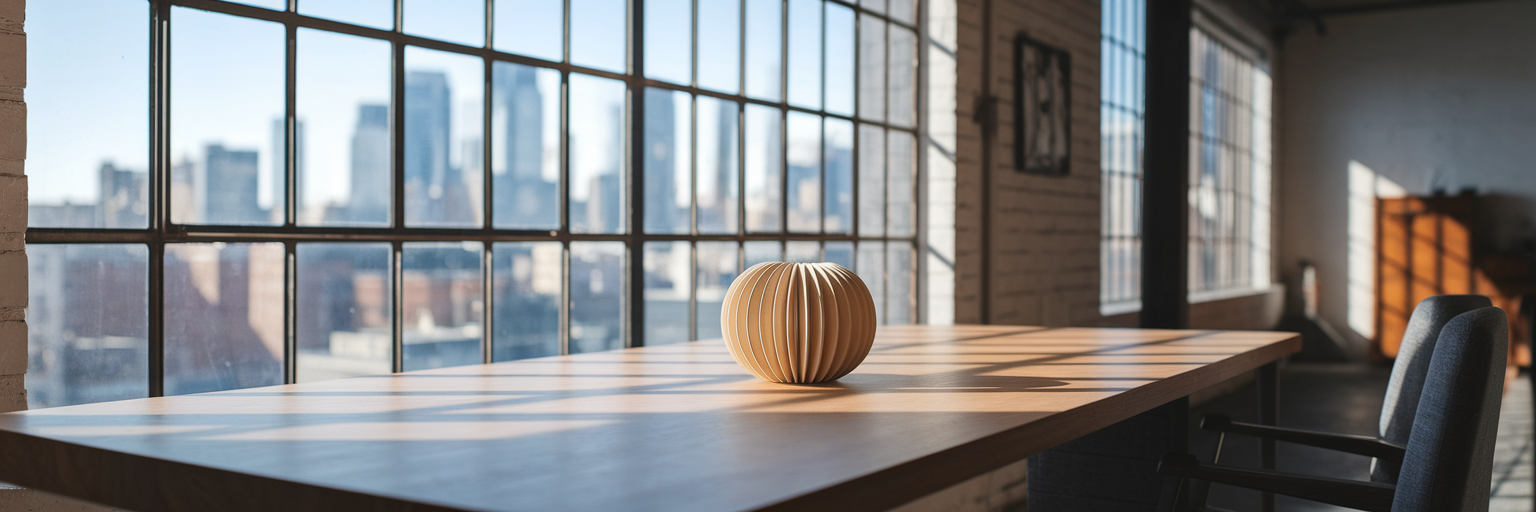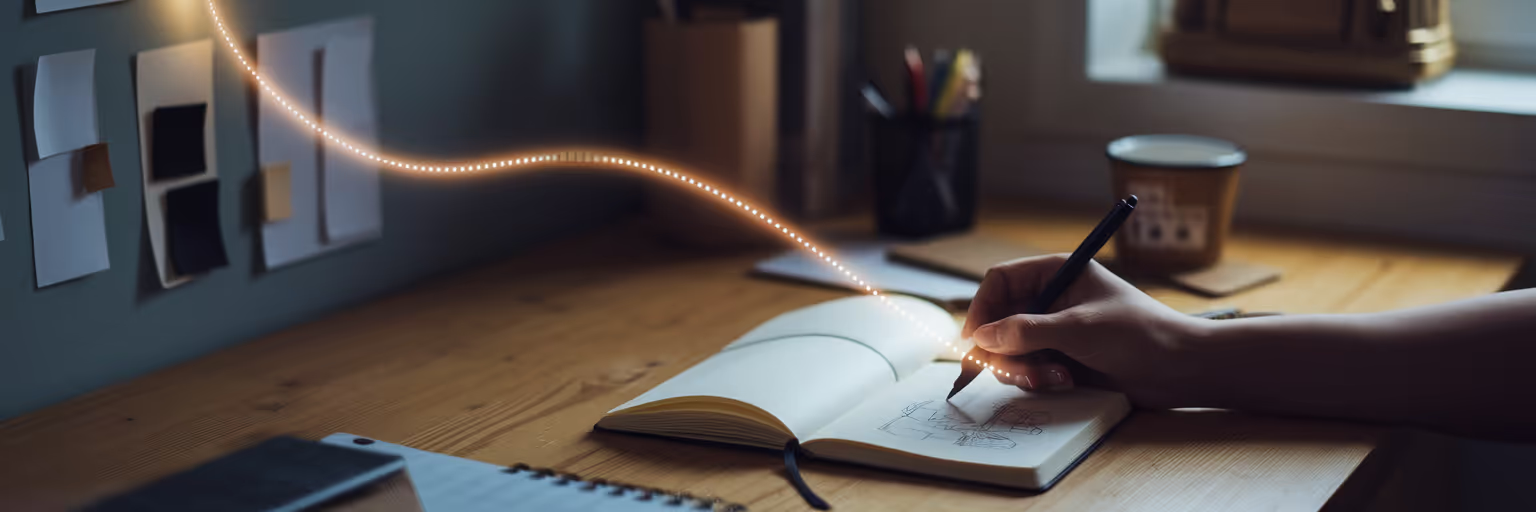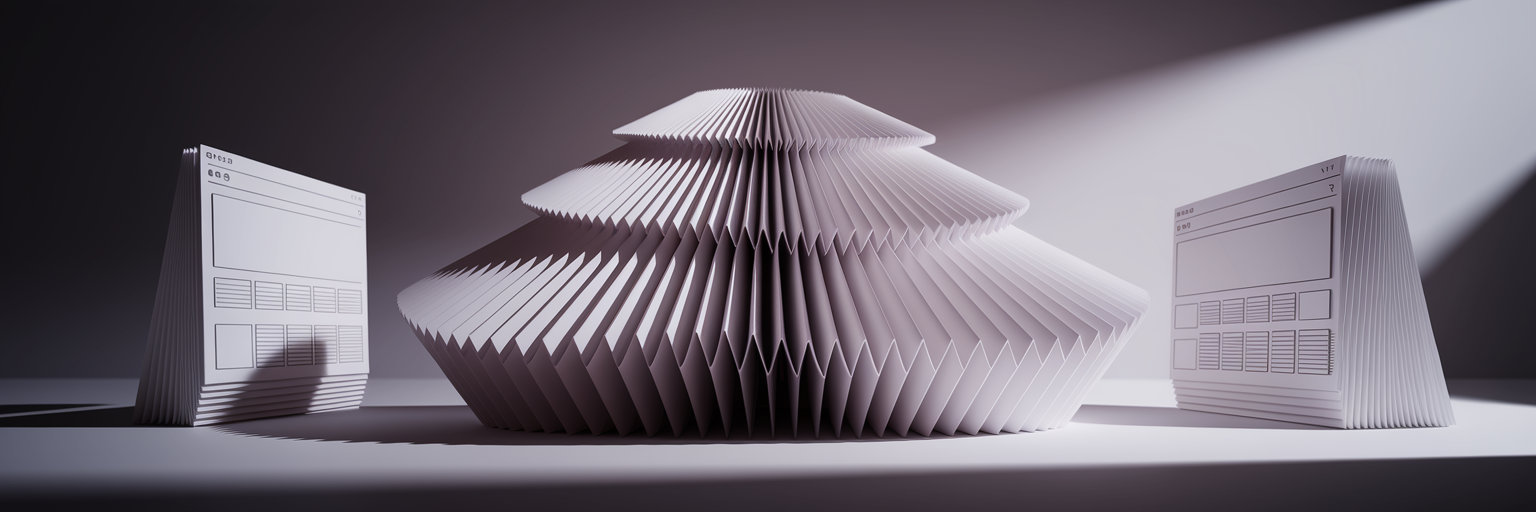We’ve all been there: 42 open tabs, a desktop littered with screenshots, and that one perfect reference you swear you saved last week, now lost in the digital ether. This is inspiration fatigue, the feeling of being surrounded by content yet creatively stuck. It’s a common struggle for designers and developers who need a constant flow of fresh ideas.
The solution isn’t more content, but a more focused approach. Curated daily inspiration feeds offer a high-quality, digestible dose of creativity, cutting through the noise of endless scrolling. They provide a structured way to discover new work without the chaos.
This guide will show you how to build an effective design inspiration workflow by integrating these feeds, analyzing content, and turning abstract ideas into actionable concepts. With the right approach and tools like Bookmarkify, you can transform that chaos into a powerful, organized inspiration library that fuels your work instead of draining your focus.
The Strategic Advantage of Curated Daily Inspiration Feeds
The real power of curated feeds lies in their ability to break you out of a creative echo chamber. When you only look at work within your niche, your ideas can become repetitive. Picture this: a web designer finding a brilliant layout idea from a vintage print magazine cover, or a developer discovering a unique UI animation from an indie game. This cross-pollination is where true innovation begins.
To get the most out of these feeds, you need a simple framework for analysis. According to a guide on crafting well-curated content from My Little Kitchen, a successful visual feed balances key elements. We can adapt this into the "4 C's" for analyzing design:
- Composition: How are elements arranged to guide the eye and create balance?
- Color: What emotional tone does the palette create, and how does it support the message?
- Curation: What story does the collection of work tell as a whole?
- Consistency: How do repeating elements or styles create a strong, recognizable identity?
Consistent exposure to new trends through these feeds helps you stay relevant without the grind of manual research. This isn't about chasing fads, but about understanding the industry's evolving visual language. A built-in solution like our Daily Inspiration feed saves you time by delivering six fresh, relevant examples every day, directly in your workflow.
Building an Effective Inspiration Habit

Knowing how to find creative ideas is one thing, but making it a consistent habit is another. The key is to integrate inspiration gathering into your existing routine. Try "habit stacking" by tying this new activity to something you already do. For example, spend 15 minutes browsing your feeds while your morning coffee brews. This small change makes the habit feel effortless.
It's also vital to diversify your sources. Looking beyond the usual design-centric sites can spark unconventional ideas. Consider adding these to your rotation:
- Visual-First Platforms: Behance, Dribbble, and Pinterest are great for layout, typography, and graphic trends.
- Code Repositories: GitHub is a goldmine for innovative UI interactions and web animations.
- Niche Blogs & Publications: Explore architecture, photography, or industrial design blogs for fresh perspectives on form and structure.
Of course, inspiration can strike anywhere. We've all felt that pang of frustration after seeing something brilliant online, only to lose it forever. A browser extension for one-click saving is essential. With a tool like Bookmarkify, you can capture any website, image, or video instantly, ensuring no great idea gets away.
This process requires a mindset shift from passive consumption to active collection. With every item you save, ask yourself, "How could this solve a problem I might face later?" As a Medium article on inspiring Instagram accounts highlights, following feeds that fuel positivity can also boost your creative drive. The goal is to build a personal library of solutions, not just a folder of pretty pictures.
A Framework for Analyzing Creative Work
To truly benefit from your collected inspiration, you need to move beyond just "liking" a design and understand *why* it works. This simple, three-step framework helps you deconstruct, question, and connect ideas to your own projects.
Deconstruct: Break It Down
The first step is to identify the core components that make a design successful. Is it the elegant typography pairing? The clever use of negative space? The smooth user flow animation? Be specific. Using a tagging system to label these components (e.g., #typography, #layout, #colorinspo) helps you find them later when you need them.
Question: Challenge the Design
Next, ask probing questions to spark new possibilities. "How would this look in a different color scheme?" "What if this layout were applied to an e-commerce site instead of a portfolio?" "What is the one element that makes this feel unique?" This critical thinking turns passive observation into an active creative exercise.
Connect: Relate It to Your Work
Finally, make the inspiration actionable by relating it back to your current or future projects. Our Design Analyse feature can help here by instantly showing you a site's fonts and colors, allowing you to see if those elements could fit into your own brand guidelines. Building a cohesive system is key, and you can find more tips on this topic in other articles on our blog.
The 3-Step Framework for Analyzing Inspiration
| Step |
Action |
Example Question |
| Deconstruct |
Isolate the core visual or functional elements. |
Is it the grid system, the button hover effect, or the color palette that makes this work? |
| Question |
Challenge the existing design choices to explore alternatives. |
What would happen if I used a serif font here instead of a sans-serif? |
| Connect |
Link the inspirational element to a specific project or problem. |
Could this navigation style solve the user flow issue in my current app design? |
From Abstract Idea to Tangible Concept
Once you've analyzed your inspiration, it's time to bridge the gap between idea and creation. A great starting point is generating mood board ideas. A mood board helps translate a feeling or a collection of saved items into a cohesive visual direction. Our moodboard view is built specifically for this, letting you arrange your bookmarks into a beautiful, shareable canvas.
Remember to adapt, not imitate. Think of it like a chef using a recipe for inspiration but adding their own unique ingredients to make the dish their own. Take a single element you love—like a button style or a photo treatment—and build an original concept around it. A simple sketching exercise can help:
- Pick one saved bookmark from your collection.
- Set a timer for 10 minutes.
- Create three quick, rough variations of it, changing a key element each time.
This rapid-fire exercise helps internalize concepts and sparks originality. Finally, use your organized library for collaboration. Sharing a curated collection with team members or clients early on aligns everyone on a visual direction and prevents misunderstandings down the line. With a shareable URL, you can present your ideas effortlessly and see what a finished library can look like in our main inspiration gallery.
Build Your Searchable Inspiration Library
The final challenge is to organize creative inspiration so it doesn't become another digital junk drawer. Your organization system is just as important as the inspiration itself. A tag-based system is far more flexible than traditional folders because a single bookmark can have multiple tags (#uidesign, #animation, #blue, #minimalist), making it discoverable from different angles.
Different views also serve different purposes. A grid view is perfect for quick scans, while mobile and desktop previews help you analyze responsive design on the fly. This turns your collection into one of your most valuable creative productivity tools, making it fast and intuitive to find the right reference when you need it most.
Stop juggling tabs and start building a powerful, searchable library that works for you. Ready to turn your design mess into a streamlined, searchable library? Start building for free at Bookmarkify.











